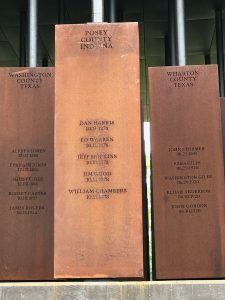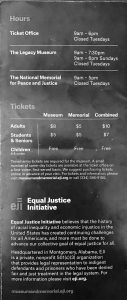
During one week in October 1878 seven Black men, three from one family, were murdered by a well-organized group of about two hundred white men in Posey County, Indiana. At that time Posey County had 20,000 residents only 200 of which were Negroes. The odds were 100 to 1 and white people held every position of power including the newspaper owners and editors, the Circuit Court Judge and the Prosecuting Attorney.
Making the crimes disappear was easy. As John Leffel, the owner and editor of The Western Star newspaper, wrote on the front page, “Now let the appropriately dark pall of oblivion cover the entire transaction”. Leffel had been an eye witness to five of the murders and even interviewed the victims before four of them were lynched on the courthouse campus and another was “slaughtered like a hog” and his body parts thrown into the jailhouse privy.
With the active assistance of Posey County’s legal and law enforcement community and the acquiescence and quiet approval of the entire white community Leffel’s directive was carried out and no one was ever brought to justice. In fact, some who were aware of and involved in the murders and coverup even went on to higher political offices.
This sordid chapter of our county’s history was brought sharply to my mind again last week when I received a letter from Deidre Eltzroth of Indianapolis. I do not know and have not met Ms. Eltzroth but, according to her letter, she is the daughter-in-law of a close friend of mine, Jerry Kuykendall. Jerry and I have been friends for forty years and as a teacher at Mt. Vernon Junior High he coached our son, Jim, in track. Jerry is a generous public servant who gives countless hours through the Red Cross and numerous other activities. Deidre wrote that she had read my book, JUDGE LYNCH!, which is about the murders. She opined I might be interested in a memorial to the victims.
Deidre enclosed a brochure on the Equal Justice Initiative in Montgomery, Alabama. The memorial at EJI is dedicated to the more than 4,000 Negro lynching victims who were murdered in America between 1877 and 1950. Some of Posey County’s victims are named on a bronze coffin. EJI is asking each of the localities where people were lynched to dedicate a memorial to the victims. Peg and I toured the EJI in Montgomery this past summer. It is a sobering reminder of our treatment of “freed” slaves and other African Americans after the Civil War.
By coincidence, just recently three of the leaders of the Posey County Bar Association inquired about honoring my 38 years of service as judge. I was humbled and gratified by their thoughtfulness and suggested what would be most desired by me would be a memorial on the campus of the Posey County Courthouse to those long-forgotten souls who were murdered without due legal process then cast into the dustbin of history by the establishment and the legal system.
So, thank you, Deidre, for your timely and thoughtful letter. I hope we can now all work toward righting a great wrong. For more information about the Equal Justice Initiative go to www.museumandmemorial.eji.org.


